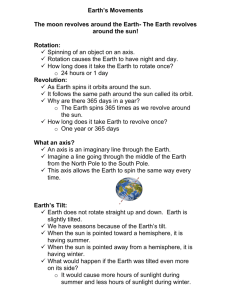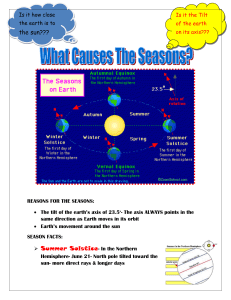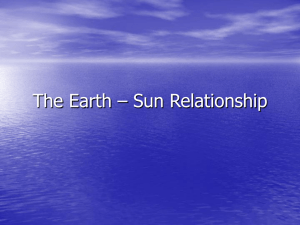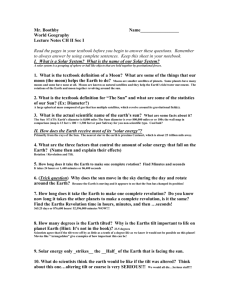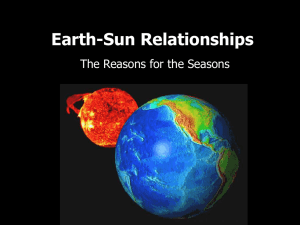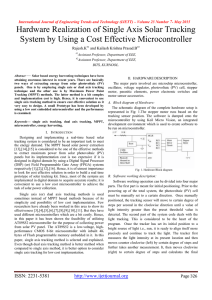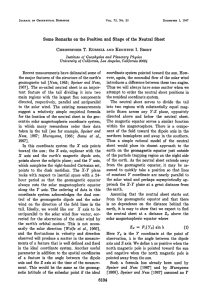Notes
advertisement
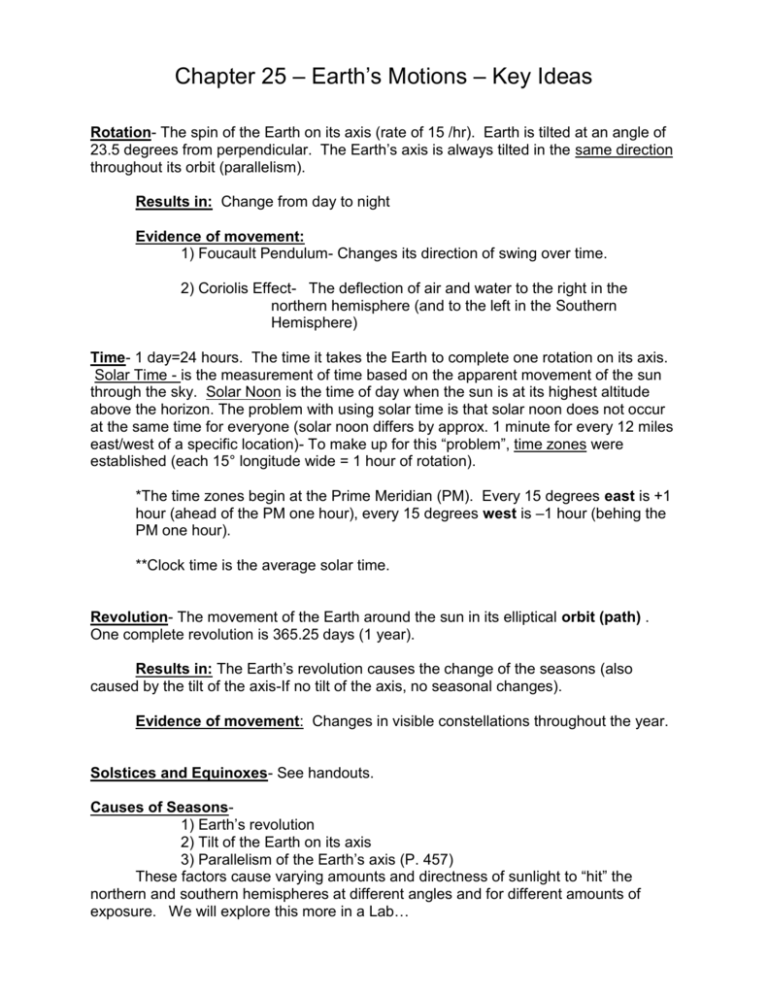
Chapter 25 – Earth’s Motions – Key Ideas Rotation- The spin of the Earth on its axis (rate of 15 /hr). Earth is tilted at an angle of 23.5 degrees from perpendicular. The Earth’s axis is always tilted in the same direction throughout its orbit (parallelism). Results in: Change from day to night Evidence of movement: 1) Foucault Pendulum- Changes its direction of swing over time. 2) Coriolis Effect- The deflection of air and water to the right in the northern hemisphere (and to the left in the Southern Hemisphere) Time- 1 day=24 hours. The time it takes the Earth to complete one rotation on its axis. Solar Time - is the measurement of time based on the apparent movement of the sun through the sky. Solar Noon is the time of day when the sun is at its highest altitude above the horizon. The problem with using solar time is that solar noon does not occur at the same time for everyone (solar noon differs by approx. 1 minute for every 12 miles east/west of a specific location)- To make up for this “problem”, time zones were established (each 15° longitude wide = 1 hour of rotation). *The time zones begin at the Prime Meridian (PM). Every 15 degrees east is +1 hour (ahead of the PM one hour), every 15 degrees west is –1 hour (behing the PM one hour). **Clock time is the average solar time. Revolution- The movement of the Earth around the sun in its elliptical orbit (path) . One complete revolution is 365.25 days (1 year). Results in: The Earth’s revolution causes the change of the seasons (also caused by the tilt of the axis-If no tilt of the axis, no seasonal changes). Evidence of movement: Changes in visible constellations throughout the year. Solstices and Equinoxes- See handouts. Causes of Seasons1) Earth’s revolution 2) Tilt of the Earth on its axis 3) Parallelism of the Earth’s axis (P. 457) These factors cause varying amounts and directness of sunlight to “hit” the northern and southern hemispheres at different angles and for different amounts of exposure. We will explore this more in a Lab…
